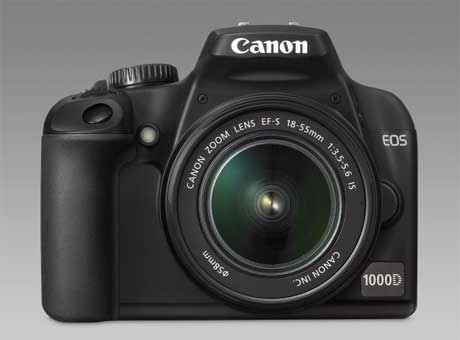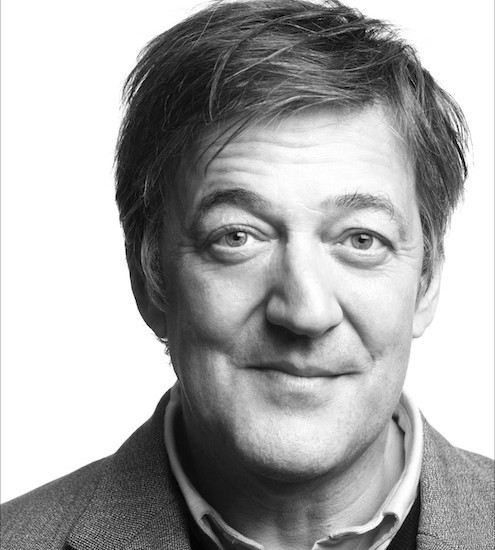Are you Coke or Pepsi? PC or Mac? Oxford or Cambridge? Nikon or Canon? Stephen Fry reveals where his loyalty lies
Column “Dork Talk” published on Saturday 20th September 2008 in The Guardian “What kind of camera are you?” – The Guardian headline.
Every Coke has a Pepsi, every Visa a MasterCard. Who do you support in the Boat Race and why? Don’t you dare tell me you couldn’t give a fig either way: it’s Oxford or Cambridge, at some point one must develop a preference, for whatever reason. It’s Harvard or Yale, Harpic or Domestos, AA or RAC, PC or Mac. Binary tribalism: Gilbert and Sullivan wrote a song about it.

Canon EOS 1000D: All the convenience of a compact, but underneath lies the potential of a real grown-up SLR
In the world of serious SLR photography, the choice has always been between Nikon or Canon. The single lens reflex (SLR) camera is best defined as being the sort of camera where what you see is what you shoot. As the initials tell you, it is a single lensed entity, a lens that can be changed with a twist of its bayonet. A clever mirror ensures the viewfinder’s image is more or less congruent to that of the lens. The SLR is the choice of photojournalists, paparazzi, sports photographers – anyone who needs fast, accurate shooting. The camera goes up to the eye and will be manufactured (with apologies to Pentax, Olympus, Leica and Minolta) by Nikon or Canon. A huge range of Nikkor F-mount lenses for the Nikon and EOS EF lenses for the Canon have built up over the years; they are forwardly and backwardly compatible with new DSLR and old SLR bodies, but not across the brands. An EOS won’t fit a Nikon body nor a Nikkor a Canon. There are issues with older Canons and with some Nikon auto focus lenses, but generally speaking, this broad description is correct. A profitable war zone where two major powers continue to joust.
One of the most active battlefields within this world is that of the entry level DSLR. Many people with ordinary compact digitals decide, after a while, that they are ready for the Real Thing. Serious professional kit is wildly expensive, but there is the mid-priced range for the prosumer (yes, isn’t that a lovely word?), and finally there is the “My First SLR” category, hotly contested because once a toe is dipped into either the Nikkor or EOS pool, it is unlikely the customer will change: too much will have been invested in the lenses.
Canon has had its reliable 400D and 450D and Nikon their excellent D40 and D60 models available as entry level DSLRs for some time, but I have been spending the past week in the company of Canon’s new 1000D (aka the Rebel XS or Kiss F), which I will come straight out and say I adore. It does everything you could hope to welcome a newcomer to the field of SLR photography.
New DSLRs are exceptionally annoying: the outlay is far from insignificant and it is galling when, six months after you’ve taken the plunge, a new one comes along. I won’t claim that Canon will never improve on the 1000D, but I can recommend the plunge being taken here and now. For about £400 you get one hell of a lovely camera. It is astoundingly light (some people will dislike that; I happen to love it), manageable and friendly. With four-stop image stabilisation, a 10.2 MP sensor, a customisable menu, an integrated anti-dust self-cleaning system, a large enough LCD display (albeit slightly smaller than other models), excellent Pro software, the Digic III processor used in higher-end models, SD and SDHC (but not Compact Flash) memory card compatibility and just about all the features you would expect on a prosumer model (no spot metering though, which some users will miss), it is superb value for money. It reacts quickly in Jpeg mode and, most importantly, takes fantastically high quality, low noise photographs using a gigantic permutation of manual and automatic settings. A true pro would wish for faster responses when shooting RAW, but for the rest of us, this is The One. All the convenience and ease of a compact is there, but underneath lies the potential of a real grown-up SLR. If you do buy one, give yourself time slowly to learn about real photography. Be warned: as in music and painting, no gadget can replace talent. For what it’s worth, I have Mr Magoo’s eye for a shot.
Initials of the week
DSLR Digital single lens reflex.
SDHC Secure digital high capacity memory cards.
RAW An uncompressed, unprocessed image file. These are much larger, but allow complete control over the image.



